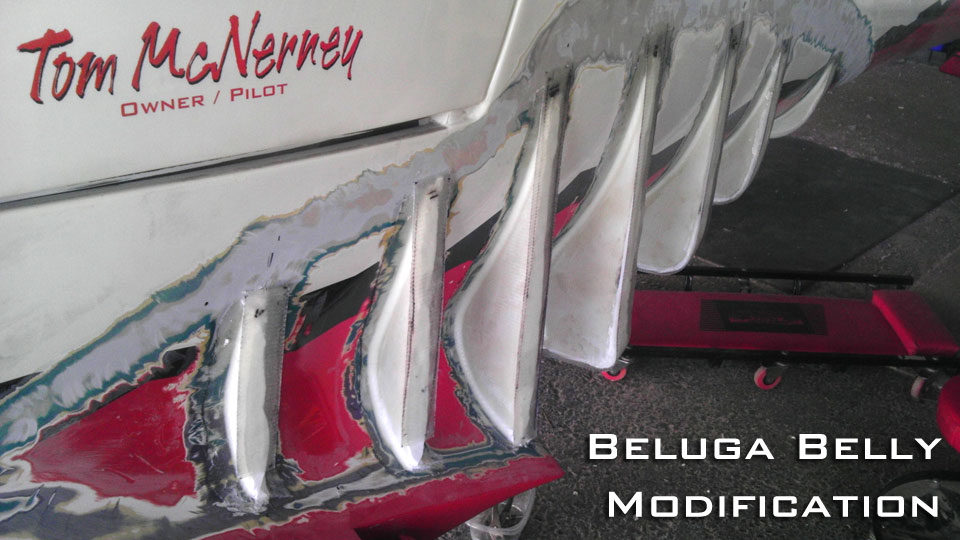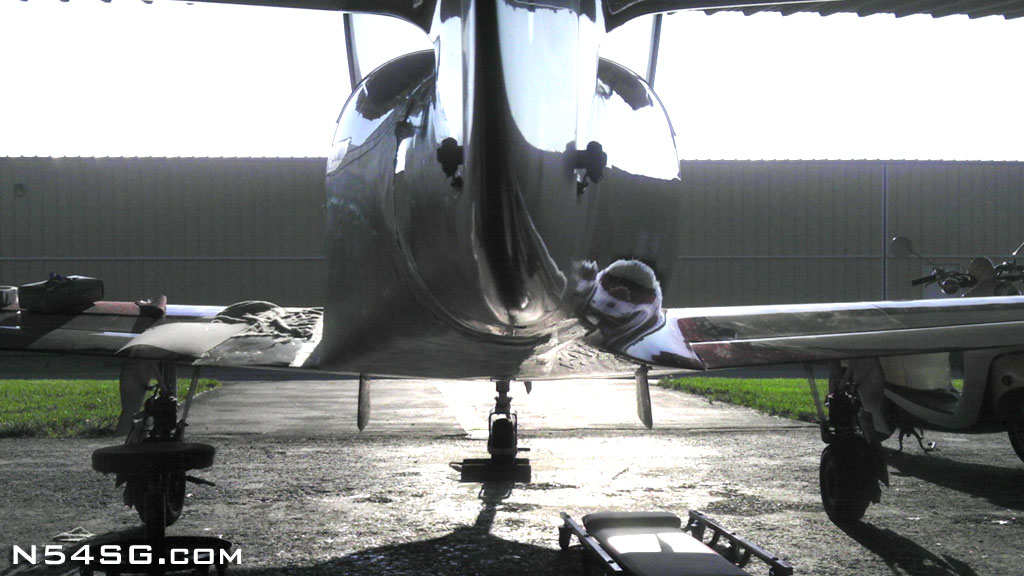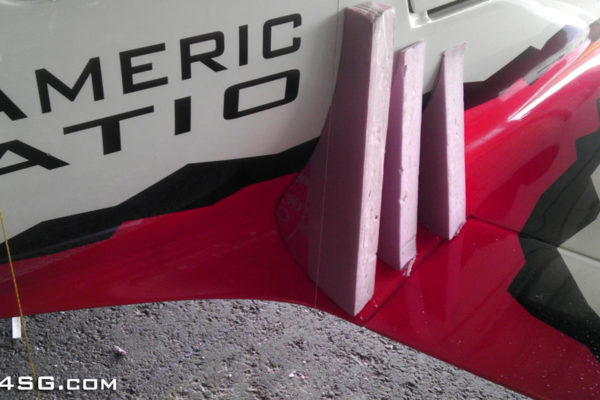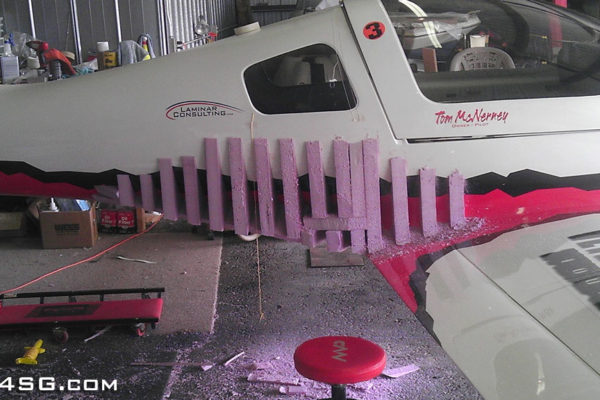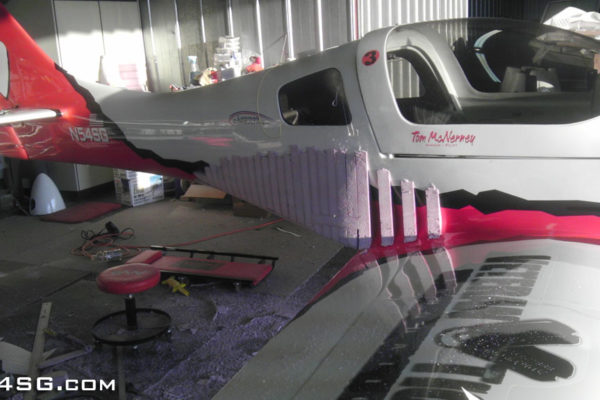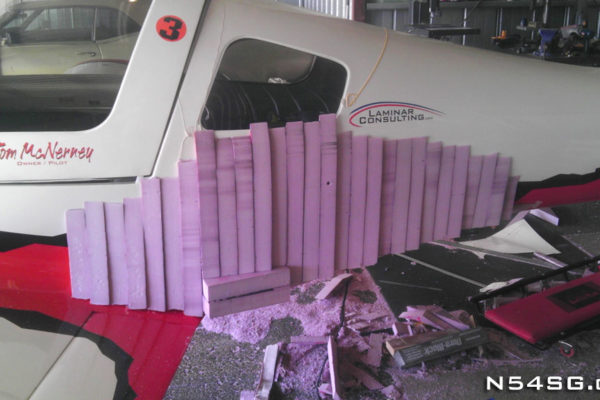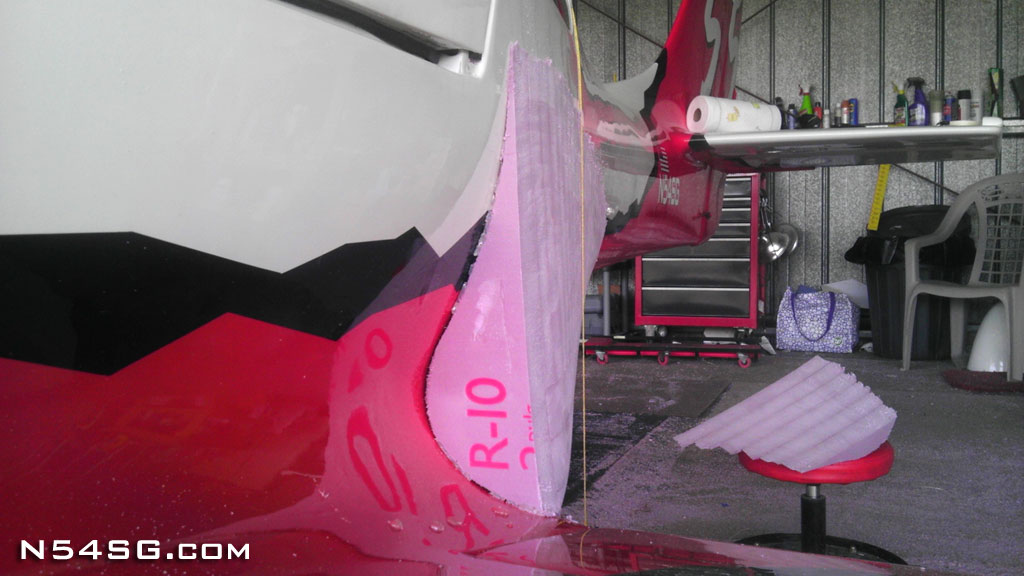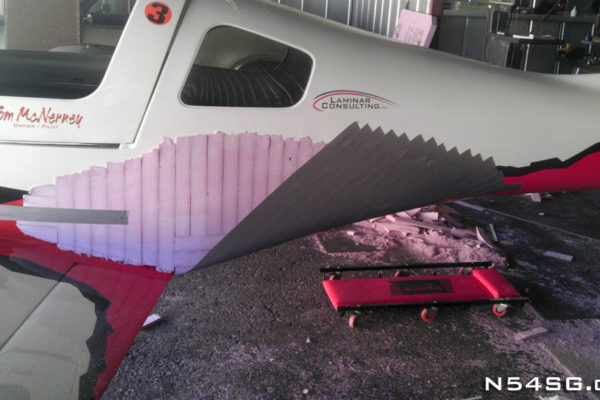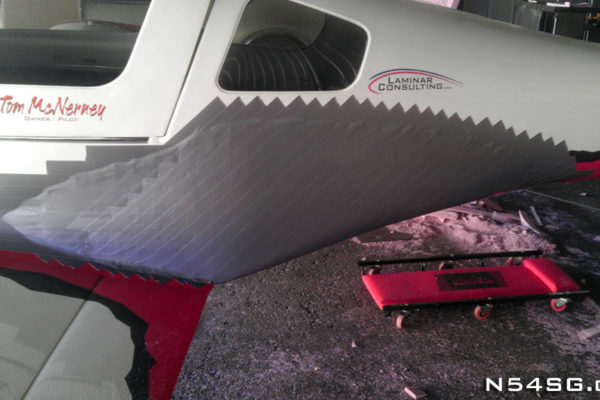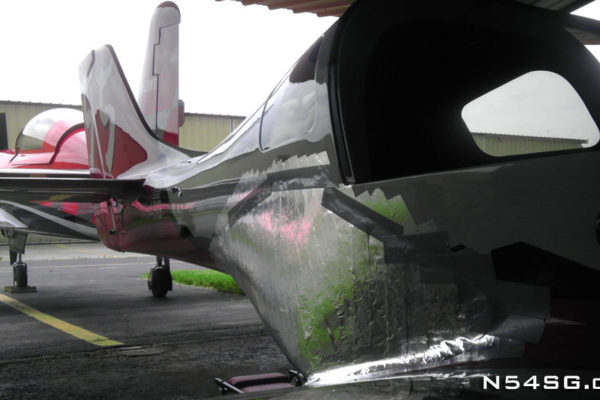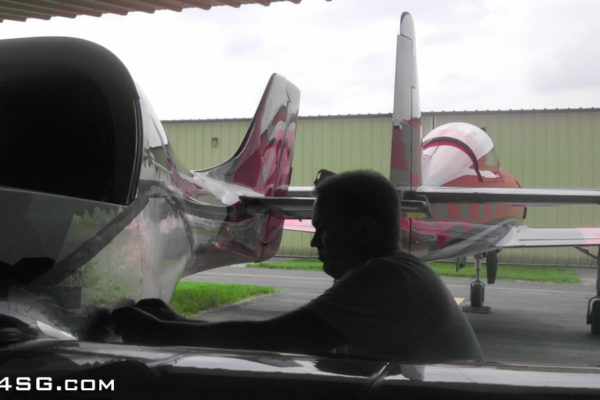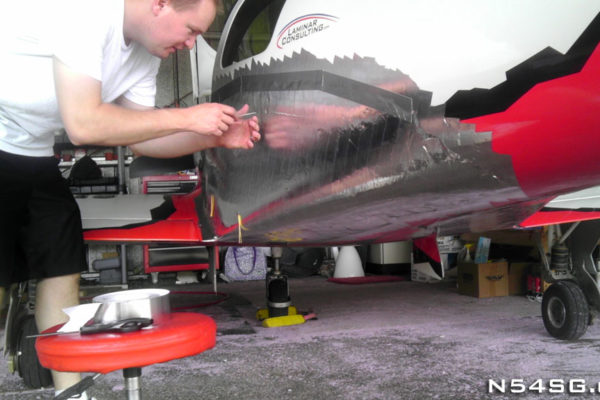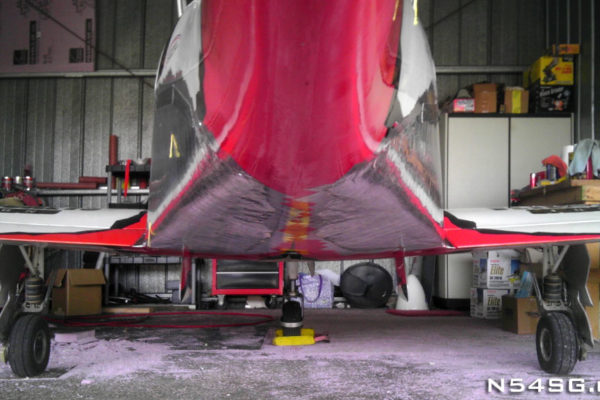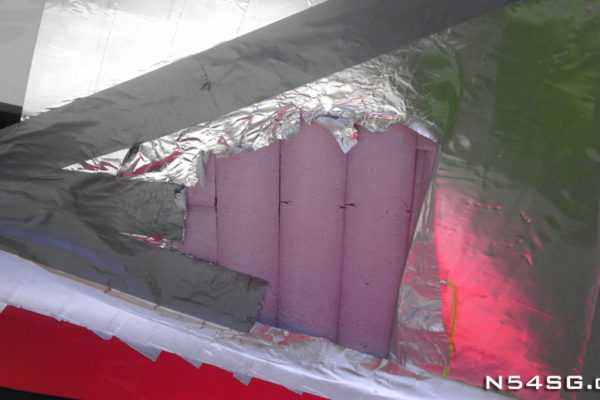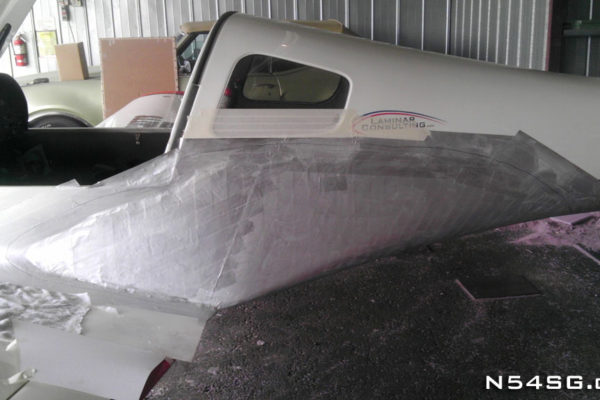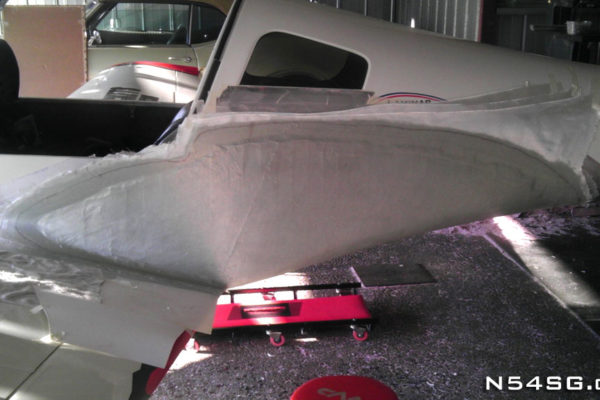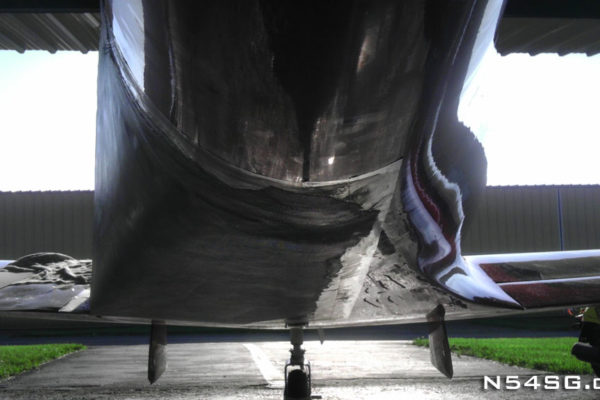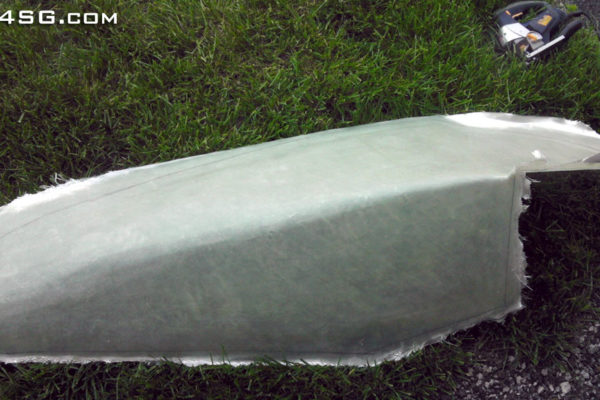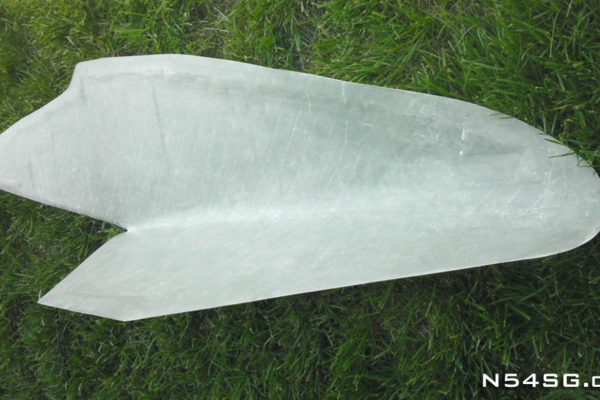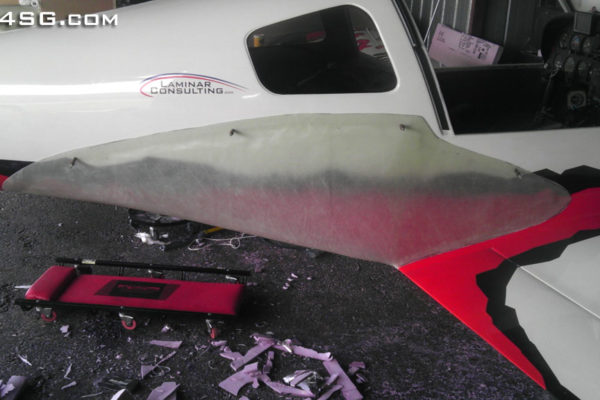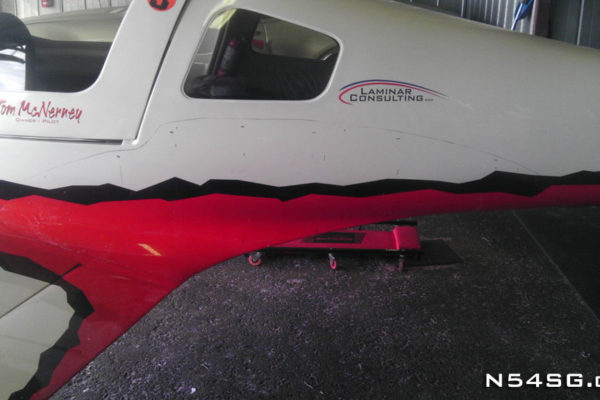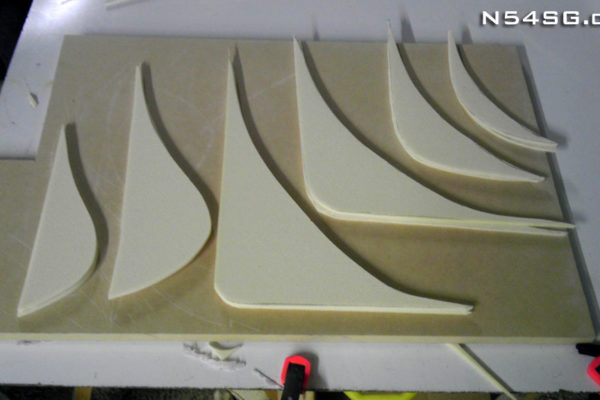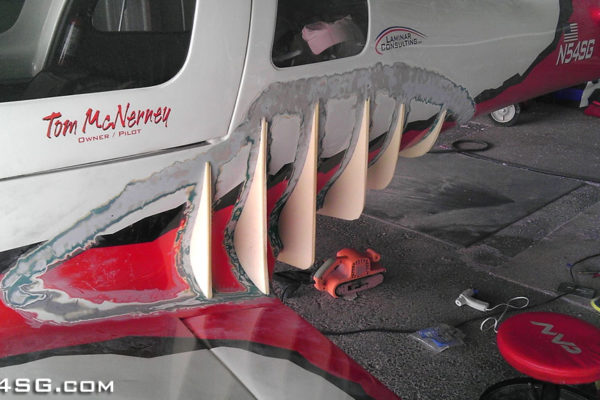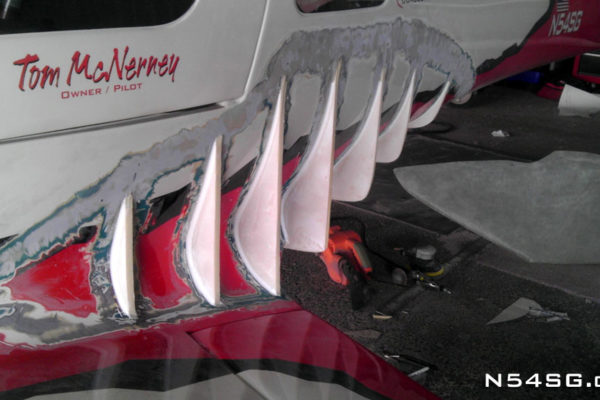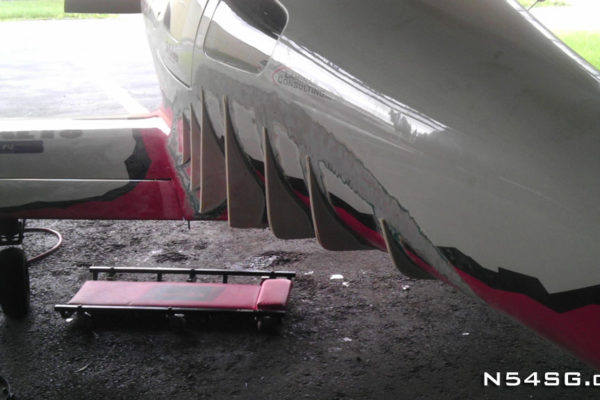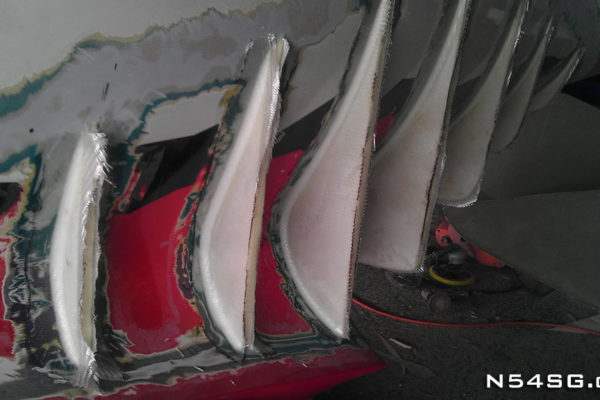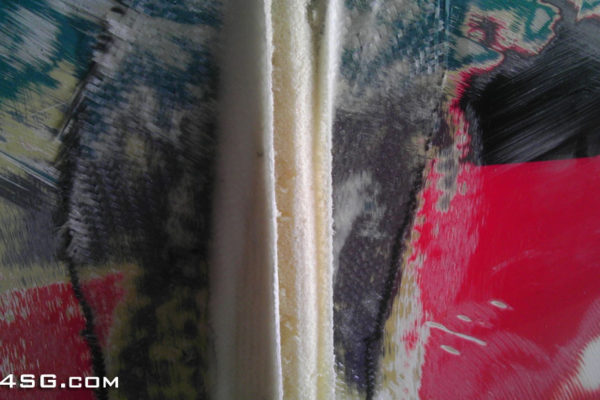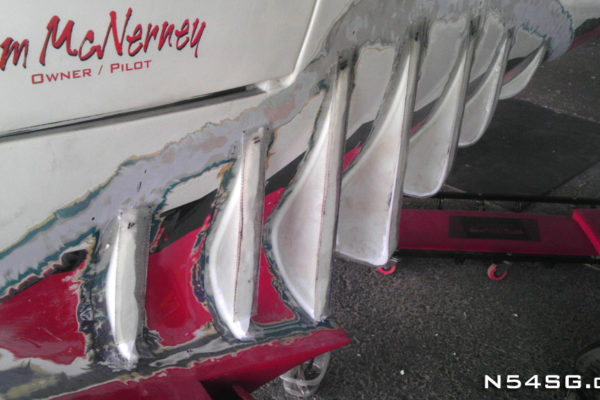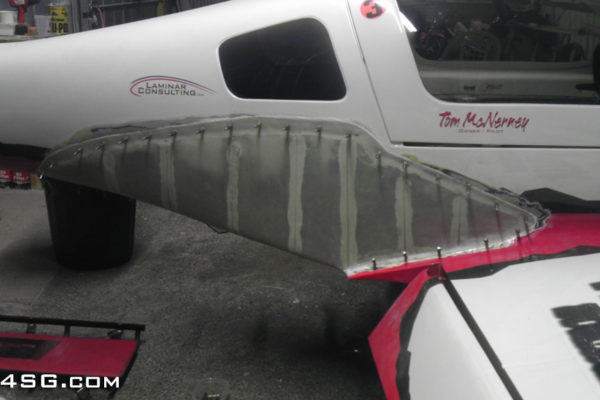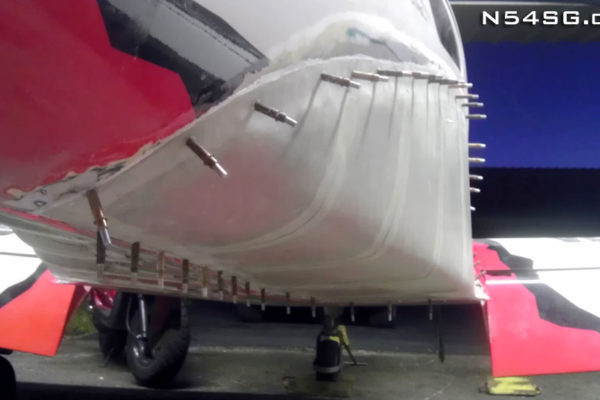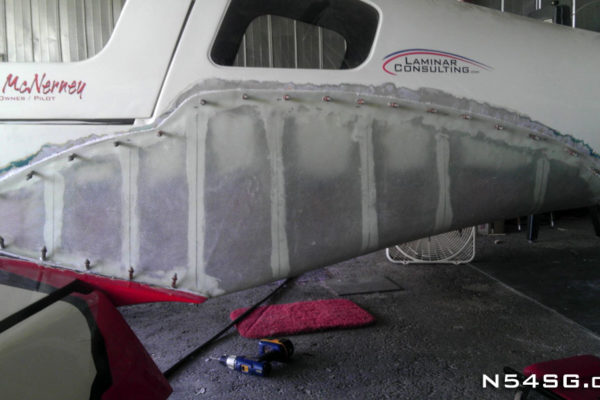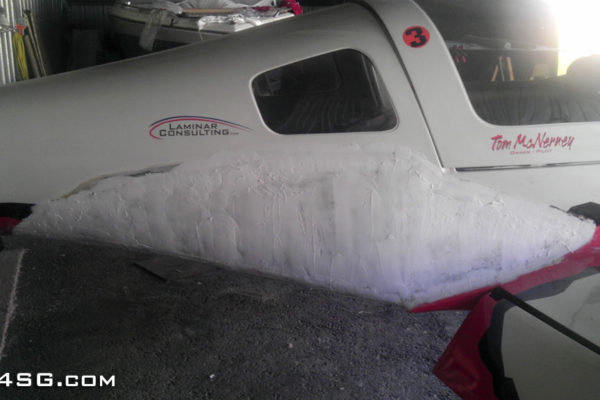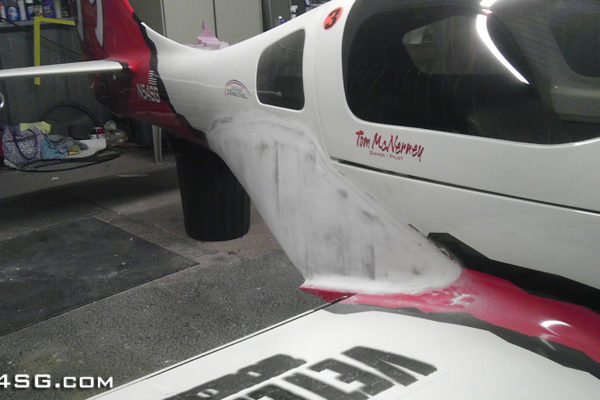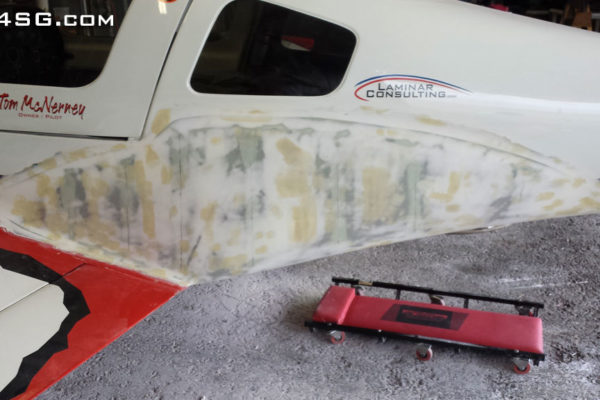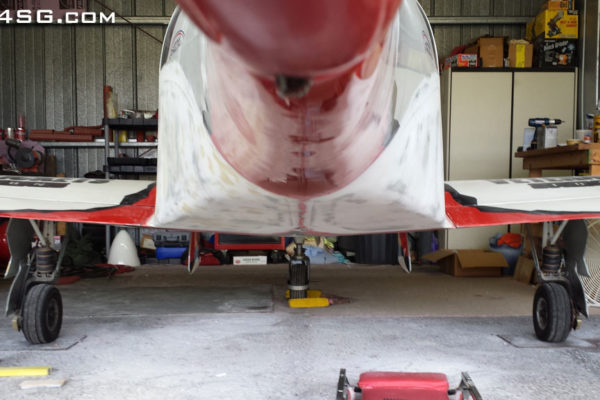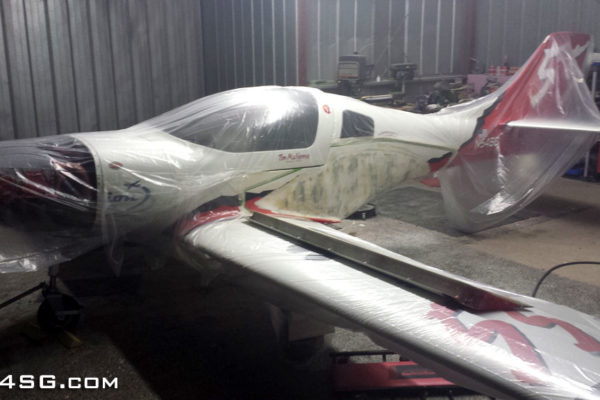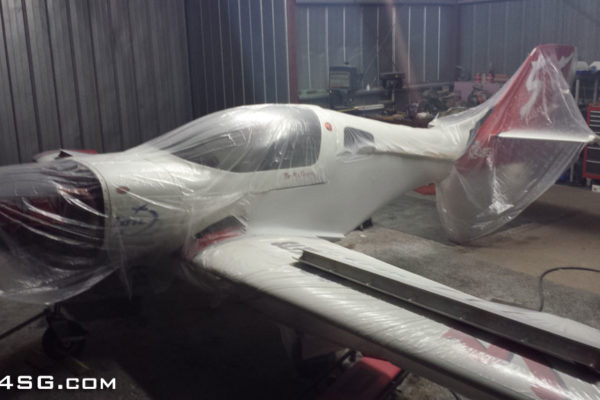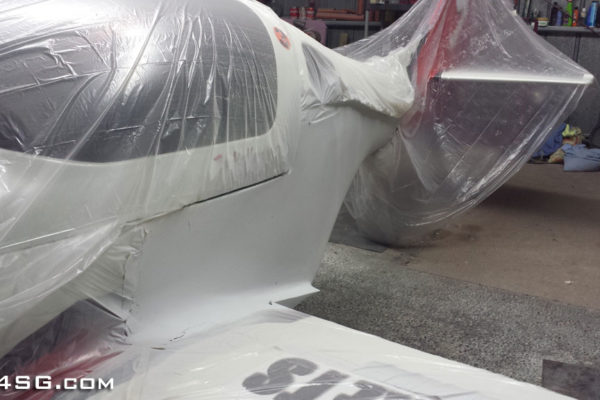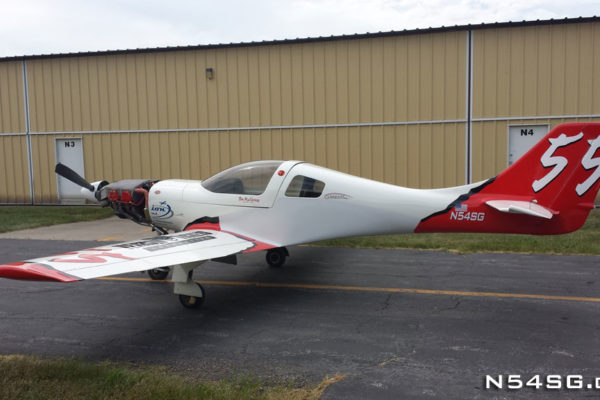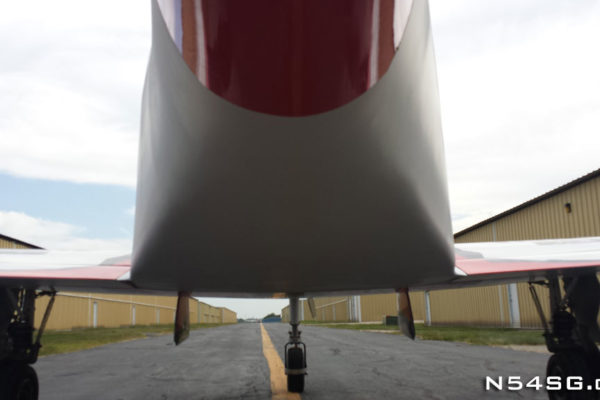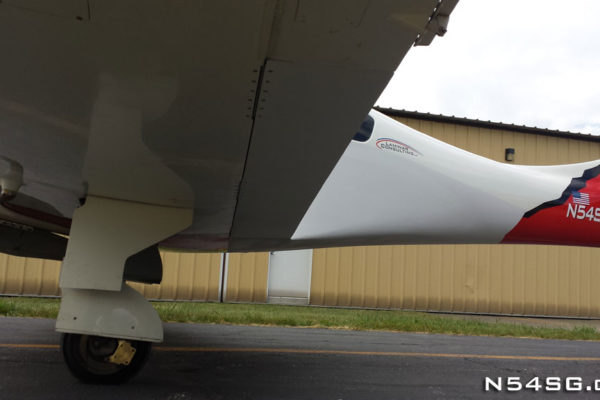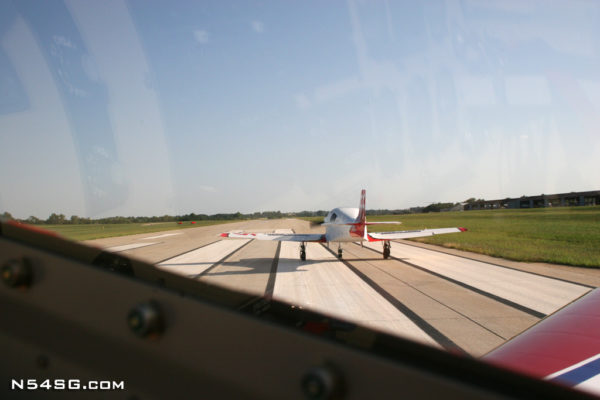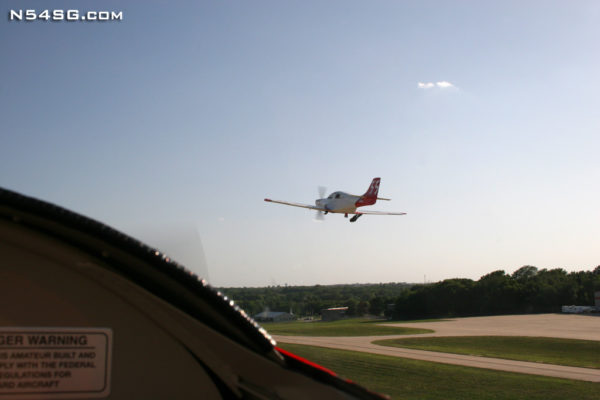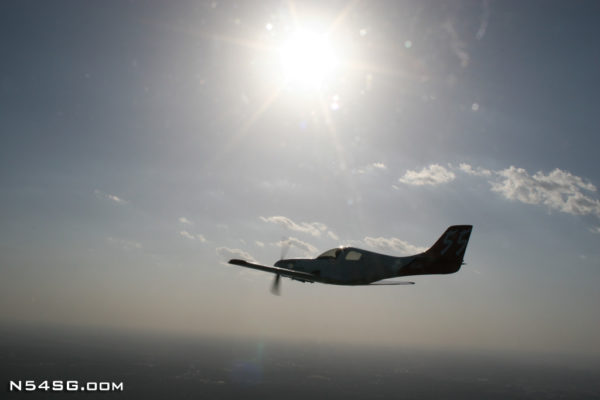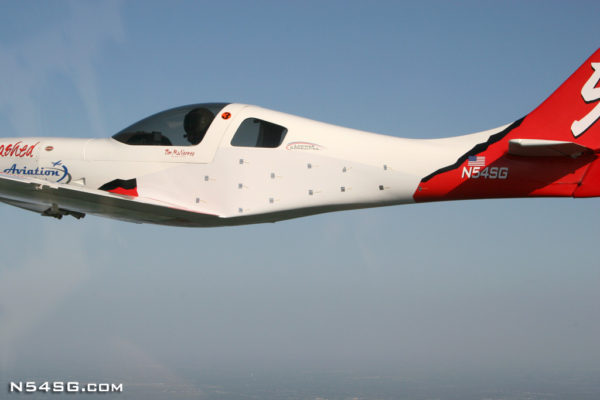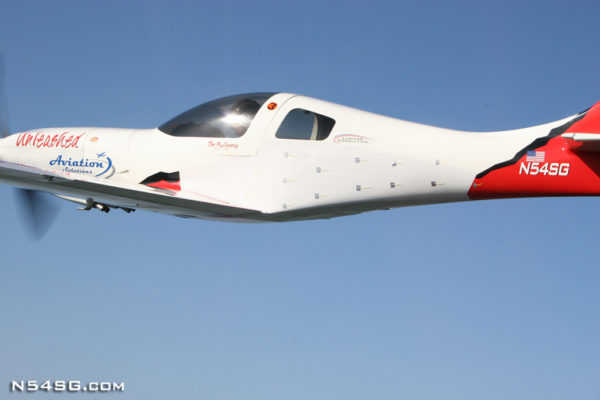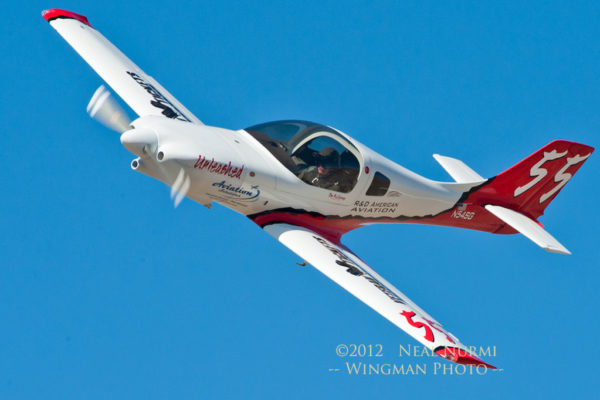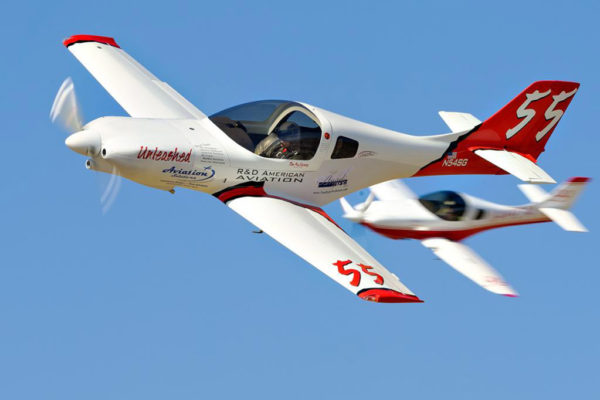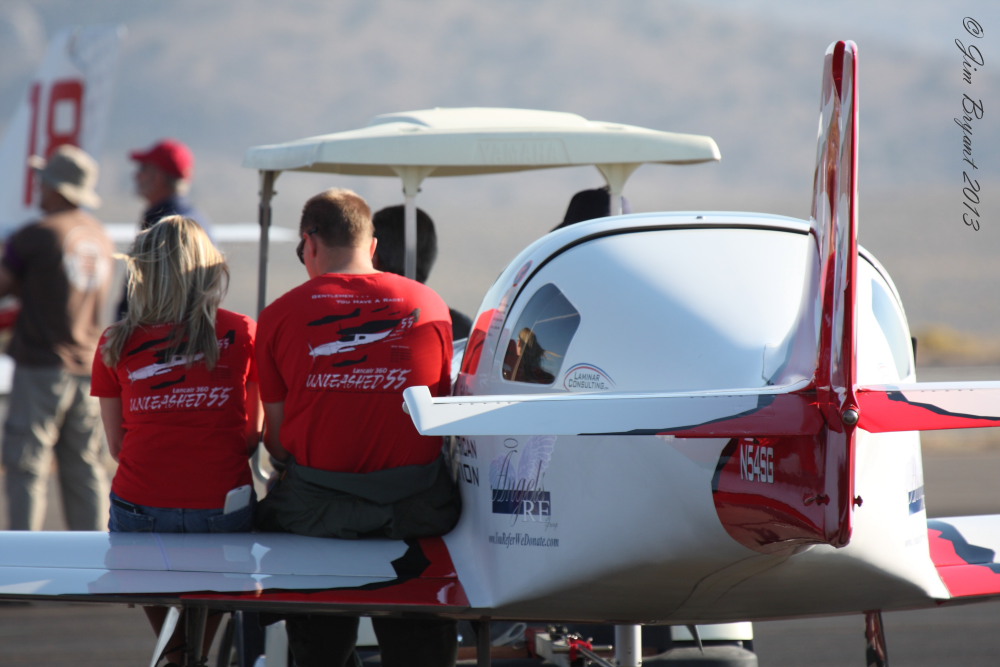At this point with this airplane, it has become a test bed for all sorts of ideas. Financially I am married to it so I might as well learn what I can and continue to think outside of the box. This modification took a huge amount of work compared to some of the other changes I have made. Also, as far as I know, I am the first to attempt this on any Lancair 320 / 360. Let me start by trying to explain the principle behind it.
The first sign of an issue was testing at race power for the Reno Air Races. As the airplane would near top speed, the vertical airspeed indicator (VSI) would start to swing rather wildly from +500 to -500 feet per minute while the airplane maintained level flight. What seemed to be happening is a large change in static pressure near the static ports on the fuselage. These ports are located according to the build manual just below the rear windows near the aft edge with ports on both sides that join to a common static line. This location has proven to be very accurate in regards to indicated airspeed. The theory, my theory, is that the shape of the fuselage in this area was causing a rather divergent flow that would oscillate the local area pressure. This in other terms, means drag.
Following my number 1 rule, cheat first, I started looking around at some other solutions to a similar problem. Most notably is the very successful Lancair Legacy named Breathless that is owned and raced by Lee Behel. Breathless gets the name by lacking the turbo’s many of its competitors have. A stock Lancair Legacy suffers from a similar design flaw that the 320 / 360 has, only it isn’t nearly as bad. Let me try to explain the flaw.
While the airplane passes through the air, ideally you want said air to change direction as little as possible while you pass an engine, people, their stuff, fuel, and wings through it. Obviously there are some unavoidable conditions that have rather blunt surfaces, like a cowling, but that is life. Where most people spend time (myself included) is softening these transitions to increase performance. A ‘more pointy’ cowling for example. Where most people forget to spend time is the pressure recovery that happens after you push a huge hole in the atmosphere. That is the beginning to this problem.
The problem with the fuselage on my airplane is that it starts to get narrow rather quickly. In fact, it starts the turn inward while still on top of the wing. This causes a few problems in my mind. Ideally you want the wing to complete its job of lifting first, before trying to disturb the air in another direction. Keep in mind that while the wing is working, you have turned the relative flow already as the wing gets thinner near the trailing edge. This flow is not parallel to the direction of flight, but angled down. So in a ‘stock’ configuration, this airflow was having to make a turn to the center of the airplane to fill the void left behind the cabin at the same time. This is what I would call divergent flow.
Now introduce the current speed of the airplane, that being at or above the original published Vne at times. This speed increases the importance of the shape and I suspect it was too drastic of a turn to remain attached in some sort of quasi laminar flow, thus it was turbulent and causing false static pressure variances. If you can picture this three dimensional condition, you get a gold star. The other byproduct of turning air in multiple directions away from each other at the same time is a change in pressure. Just like my diffusers in my engine cooling plenum, the air slows down and pressure increases. Great if you’re cooling an engine, not great if you’re trying to reduce drag. However, I needed evidence.
Tufting an airplane can only go so far, and I’ll admit the hardest part is finding a formation buddy with a camera to record the results. In this case, I only have word of mouth as to what the tufts were doing and no tangible evidence to share. I was told in the area below the rear windows, and extending almost halfway back to the tail, the tufts were angled 30-45 degrees up even over 250 mph true airspeed. My theory is this huge amount of higher pressure air from the bottom of the wing is rushing up to fill this void behind the cabin. Translated: Drag
The cure would be to fill the void, to put it simply, while carefully balancing potential parasitic drag and the size of the part. Tricky… Often this modification is rather big and has been deemed the beluga belly modification after the rather big and funny looking Beluga whale.
This terrible picture is about the best I can come up with comparing the original shape (right side) to the modified shape on the left.
So let’s get started! First I needed to define the shape. I wanted to use some sort of expandable foam but I have had terrible results with the stuff so far, thus I resorted to good old pink polypropylene foam from Home Depot. It is cheap and readily available in 2 inch thick sheets. I dropped a few plumb bobs off the widest point of the fuselage, aft of the trailing edge of the wing. This would give me a ballpark guide for shaping purposes. Then I carefully starting cutting blocks to form to the side of the fuselage with enough material to form the part I wanted. Wow, that sounds simple, but in reality that is a TON of busy work getting it all to fit. For simplicity and time sake, I just hot glued them in place.
To start defining the shape I used a wood rasp on the foam. Messy, but it goes quickly. Just be careful to not go too quickly or you’re screwed! I wanted the fuselage to remain perpendicular to the wing, all the way to the trailing edge. This lets the wing complete its job before trying to change the direction of flow. Locating this point on the wing sets the stage for the entire part. It is now a matter of converting this point into a complex shape the blends in to the tail of the fuselage in an aerodynamically good and aesthetically good way. Well that makes it sound easy.. The more I understand this idea, I think I could have found a more ideal shape. Something resembling a true sign curve. The picture below is the best representation of the change in shape. With the modification completed, it is hard to know how bad it originally was without being able to see it.
I really took a gamble with the next phase. Before I committed to what I would call a rather permanent change, that being bonding on a fiberglass skin, I wanted to make sure I was at least going in the correct direction. I secured the foam to the fuselage as best I could, and with a wingman flying chase, I test flew it. Since this part was filling a void that wanted to be filled anyway, there wasn’t much direct force on the part, in theory. This reduced the risk greatly. The first flight introduced two things. First, duct tape was only good to about 150 mph. And second, the modification did change the downwash on the horizontal. This I somewhat expected. Essentially, the entire horizontal and elevator was more effective at low speed. Call that a win! But we needed to go faster. Off comes the duct tape, on goes aluminum tape! This allowed me to test at much higher power, almost 230 mph, before it started to let go. The main point here is that the airplane was definitely not slower, and seat of the pants felt cleaner. It was a good enough feeling that I committed to the remainder of the project.
Now to make the real parts! Since all my foam made it home ok, I expanded the aluminum tape area and waxed the entire surface with mold release and covered the entire area with 4 BID 7725 fiberglass. Carbon was considered for this part as it would save some weight, but the down side is the considerable extra cost and the stiffness it would provide. The fuselage is fiberglass and I didn’t want to introduce this long, very stiff, carbon skin to an area with dissimilar properties, thus creating a potential focal point of stress. As you can see, the part continues under the airplane all the way to the centerline of the fuselage. The original fuselage curved up after the trailing edge of the wing as well, so this would help transition the new sides to the bottom of the airplane.
Once the new skin had cured, I outlined where the part would need to be trimmed, being a bit cautious and leave me some room for final trimming later. Also, before I removed the skin from the foam plug, I drilled a few locating holes. This would make it easy to return the part to the exact same spot on the fuselage.
The point of no return.. Up until now, I still had a complete airplane that didn’t look that bad. I could easily stop and no harm done. In order to bond the skin to the fuselage, I would need to create a good bonding surface. I started hand sanding an area. Let me tell you, those first scratches through clear coat are hard to do! Quickly I ran out of strength and switched to a pneumatic sander. Not long after that, in shock of how deep I was having to go, I switched to my handy electric belt sander! Well, what I found was quite the surprise. I relate it to how and archeologist uncovers a mystery. Clear coat, white paint, primer, different primer, teal blue (?), primer again, some sort of high build filler, and then fiberglass! Seriously. Now I know why this airplane is 50 lbs heavier than a comparable equipped 360. I’ll deal with that some other time.
In the ideal world, these new skins would have been made from a mold. Then each skin could have some sort of core creating a compound curve sandwich panel. But, being that I lacked the time and motivation, I skipped the mold step. This meant I would have to support the skin from the inside. The best way I found was a set of ribs. I used my pink foam parts as ballpark templates to cut ribs from .5″ last a foam. Next I bonded those ribs to the fuselage skin where I sanded a good bonding area. Like most foam ribs, I mixed a wet micro slurry and covered the surface of the foam to allow a good bonding surface. For strength I also used micro to make a smooth radius on all the bonding edges, then covered each side of the rib with 1 BID fiberglass from the fuselage to the outside of the rib. This would give them some tensile strength as well.
In order to spread the load from the rib to the skin, I need to make some cap strips. I used the new skin as a mold, with mold release, and cured 2 BID strips at each rib location. The foam at each rib was trimmed to match the skin and I beveled the end to allow a good bonding area to the cap strip. Simply, the bond would be attaching to the fiberglass covering the rib, not just the foam itself. With cured cap strips still in the new skin, I mixed some dry micro and covered the end of each rib, then installed the skin back on the fuselage. When cured, I removed the outer skin leaving the perfectly formed cap strips in place. Later I used micro to form a radius on that inner edge of each cap strip, and covered that with 1 BID.
Now to install the skin itself I used a very wet micro mix to bond it to the ribs and fuselage, cleco’d every 2-3 inches. Once cured I covered the entire part in micro to smooth out and fill any oddities in the skin itself. Now I was able to sand the micro and get a glimpse of what it will look like. Holy Pinholes! Lots of tedious work filling holes and making minor shape adjustments with micro. By far, this is my least favorite thing to do.
At this point, I am nearing crunch time to make it to the air races. I painted it with a sort of white epoxy primer. It looked more white in the can, haha. I spent countless hours standing back at different angles trying to visualize the shape, and find problems. But, between fiberglass, micro, and body filler, the variety of colors and surfaces made it nearly impossible to see. Very much how camouflage works. So my first real look at the surface would be the white sprayed primer that I would be racing with. No pressure!
In the end, I was pretty amazed how well it turned out. It isn’t perfect, but it is damn close. The real test would be flying it. I rounded up a friend with an IO-390 powered RV-7, gave my wife the camera and had her ride right seat, and did a test hop. I was in a hurry so the tufts do not have nearly the density I wanted. Also not helping is the fact they are yellow! haha It is all I had handy in the hanger. The majority of the tufts were nearly dead straight with the exception of the last 2 on the top row. The tape I had used started to peel off so they are giving false indications. The key area, below the window and my company logo, those tufts have turned from 30-45 degrees up, to nearly dead straight. This is where the static port is. I would call that a huge improvement! Using a 3 way gps ground speed average, when compared to indicated airspeed, I show only a .5 mph difference at 270 mph true. So it is safe to say the static system is VERY close!
Here is the video taken from the photo flight above:
Results
Again, hard to quantify. At cruise power, I have about an 8 mph increase in true airspeed, so that is awesome. At top speed, I could only indicate a few mph gain. The biggest problem I had at the Reno Air Races, when comparing to last year’s races, is the starts. In 2012 I was in the Silver class and our start chute was 1,000 feet higher, and 30+ kts faster. In 2013, with a bigger group of racers, I was in the Bronze and our start chute was much lower and slower. This lowered my average race speed when comparing year to year. So when people see the speed data, it is nearly identical, even with the low and slow start. Shown below for comparison are the original fuselage as raced in 2012 next to the modification as raced in 2013.
Some benefits are the change in downwash on the tail. I feel like I have a more laminar (I use that term loosely) flow around the fuselage giving me a more effective tail. This is the small tail 360, so it has some unique qualities to begin with. This mod helped in some configurations, namely approach to landing and available pitch in the flare.
Another seat of the pants feeling is that it is much harder to slow down. It took some slight adjustments in the way I approach the pattern and fly formation. It takes a bigger power reduction to net the same result as before. Nothing major, but noticeable. I think there will be more noticeable gains in top speed when I find a propeller that is capable of this speed / power envelope. Currently, there isn’t anything better than what I have. 🙁 And it isn’t great.
A lot of people ask if I would do it again, and that is hard to answer. I think the only way I would is if it were possible to do it the way I wanted to do it in the beginning. 3D scan it, design the part in CAD, CNC a mold, make a part, bond it on. Way more accurate, way less work, it just costs 4 times as much! I have learned a few more things about this modification, aerodynamically speaking, where I wasn’t perfect. But, the amount of work vs. the potential gains on this airplane, probably not worth it.

